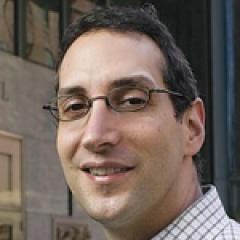Self-Contained Urban Boredom Apparatus
In November I visited the KIPP High School in New York City and summarized some of what I saw in a blog post. I’ve decided to write more about what I saw there in a series of shorter blog posts. In this one, I will describe what I saw in their special education classes.
KIPP High in NYC has very small class sizes. Some of the classes seemed to have around twelve students in them. An administrator told me, when I asked about this, that the numbers were a little low that day since they had higher than average absences that day. This was on Veteran’s day when the public schools were closed. I can imagine that at a KIPP fundraiser they brag about how they are open more days and this helps everyone learn more, so it is ironic that many students did not come in on this bonus day. I think the attendance rate that day was in the high 80s so the small classes would still be pretty small if they had full attendance.
Sometimes we hear that KIPP schools don’t have many special education students. One explanation is that when special education students win the lottery they are discouraged from going there since the school is unable to provide for the modifications they require. KIPP High School NYC, however, has a sizable percent, something around 15% to 20%, the principal told me.
As I had the freedom to go to whatever classes I wanted, I popped in on two of the special education classes to see what sorts of things they were doing there.
The first one was a math class. In this class there were about six students and two teachers. With such a small ratio I would have hoped to see some innovative things going on with students maybe working with manipulatives or other ways to make the math more meaningful. Instead what I saw were the six students spread out among the desks, about as far away from each other as they could possibly be. Instead of exciting and fun math, there was an Algebra question from a standardized test projected onto the front board which all the students were trying to do. The room had little energy in it. It was one of the more depressing classes I’ve ever seen, really.
Now I only stayed in that room for about ten minutes, so it is possible that I just came at a bad time. I’m all for some independent practice in a math classroom for some of the time. But still, if what I saw was representative of what that class was like, I would say that this type of warehousing of special education students is not what those students need.
Fortunately I also visited a special ed biology class which had a lot more going on. A teacher was asking a student questions about diabetes and asked the student she was helping “What would happen if I drank a big iced tea?” and then turned to me and said “I use myself as an example since they know that I have diabetes.” Compared to the math classroom, this was a true effort to make the subject matter relevant.
Which class was more representative of this schools strategy for helping special ed students, I can’t say. But that’s what I saw in my brief observations of two classes.
This blog post has been shared by permission from the author.
Readers wishing to comment on the content are encouraged to do so via the link to the original post.
Find the original post here:
The views expressed by the blogger are not necessarily those of NEPC.
